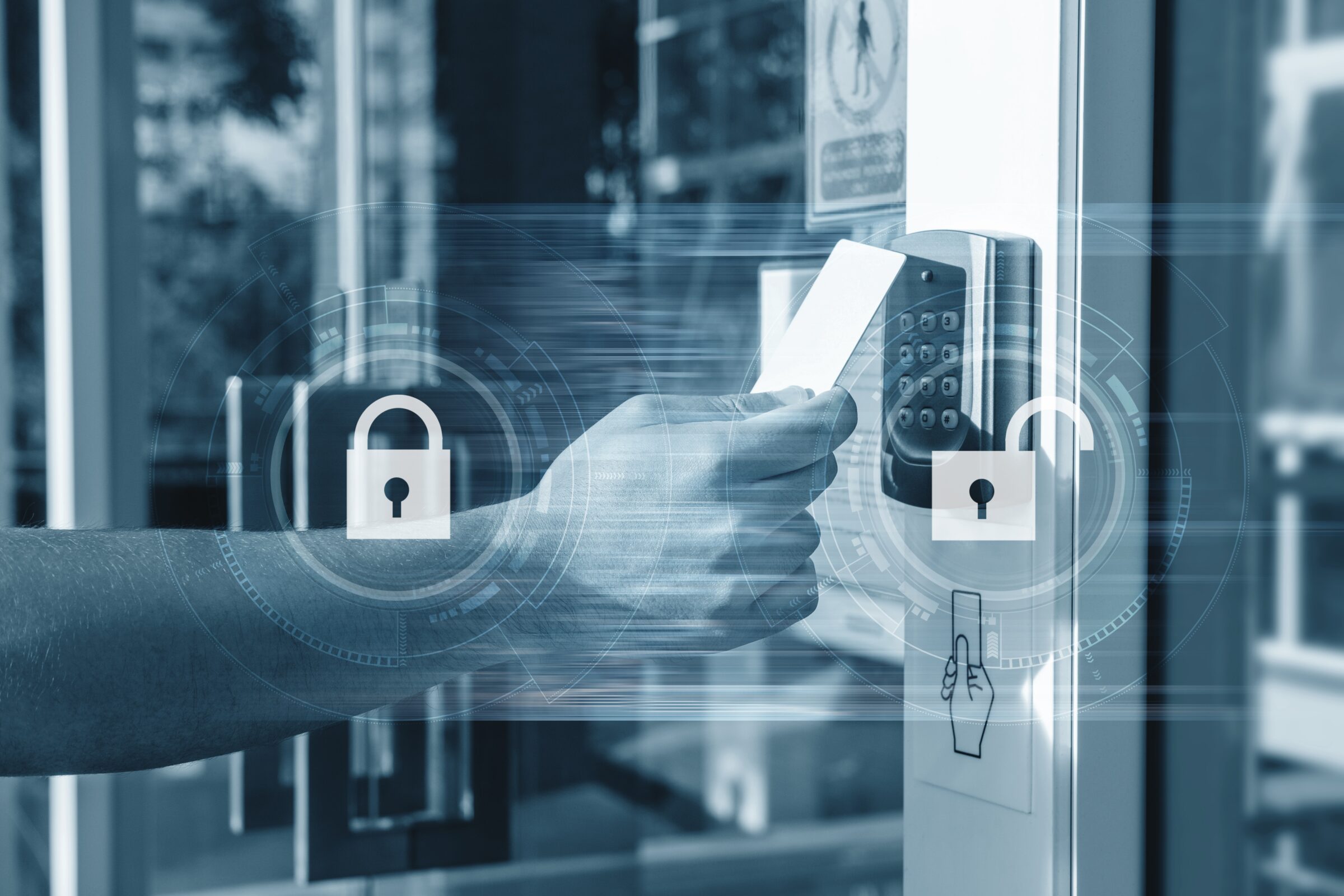If you are struggling with knowing when staff or visitors are on your premises but also want an easy way for staff to access the building, then look no further than an electronic access control system.
The advantages of having an electronic access control system include:
- The ability to monitor real time activity, on site and remotely off site
- The ability to unlock doors remotely or via schedule
- secure room access activity logs
- Staff time keeping logs
- Emergency evacuation call list logs
- Reducing your costs and increase service levels to staff / visitors
- Providing occupancy levels
An electronic access control system is made up initially of an access control point, which can be a door, turnstile, parking gate, elevator, or any other physical barrier where granting access can be electrically controlled. Typically, of course, the access point is a door.
An electronic access control door can contain several elements. At its most basic there is a stand-alone electronic lock. In larger applications involving more than one door, electric strikes or magnetic locks are used. The lock is unlocked by an operator with a switch. To automate this, operator intervention is replaced by a reader.
The reader could be a keypad where a code is entered, it could be a card or fob reader, or it could be a biometric reader. Readers do not usually make an access decision but send a card number to an access control panel that verifies the number against an access list. Biometric technologies include fingerprint, facial recognition, iris recognition, retinal scan and voice recognition.
To monitor the door position a magnetic door switch is used, rather like those on refrigerators or car doors. Generally only entry is controlled and exit is uncontrolled. In cases where exit is also controlled a second reader is used on the opposite side of the door.
In cases where exit is not controlled, free exit, a device called a request-to-exit (REX) is used. Request-to-exit devices can be a push button or a motion detector. When the button is pushed or the motion detector detects motion at the door, the door alarm is temporarily ignored while the door is opened. Exiting a door without having to electrically unlock the door is called mechanical free egress. This is an important safety feature. In cases where the lock must be electrically unlocked on the exit, the request-to-exit device also unlocks the door.
If you have several doors to control installing a networked electronic access control system is probably the best approach and a reliable software will be needed for you to be able to operate it simply through your PC or a mobile device.
Security Group engineers are experienced in installing a range of electronic access control systems from various partners, including Paxton Access and Avigilon, and will find the best solution for you according to your needs. If you want to make access control for your premises safer and simpler please contact us.



